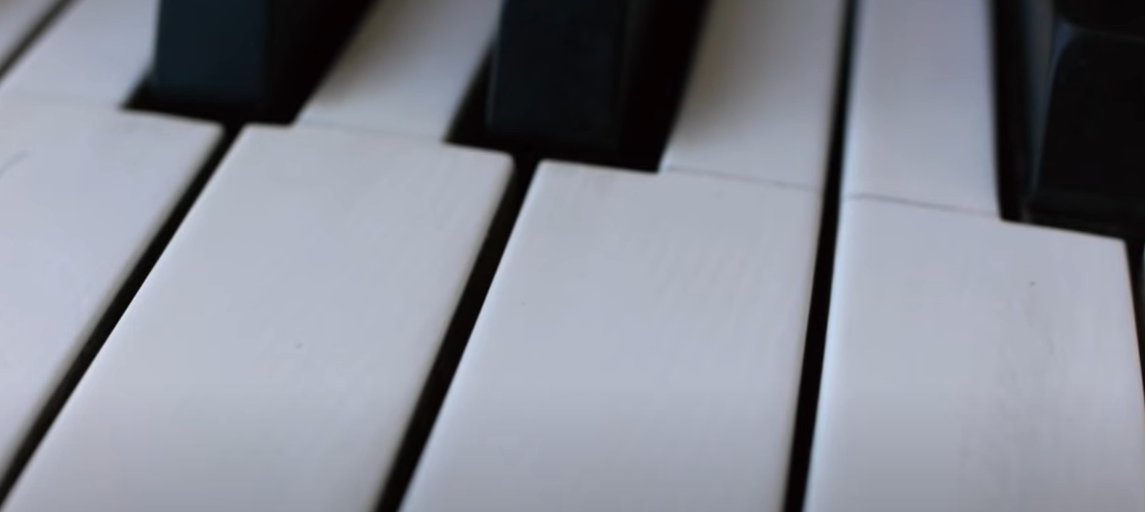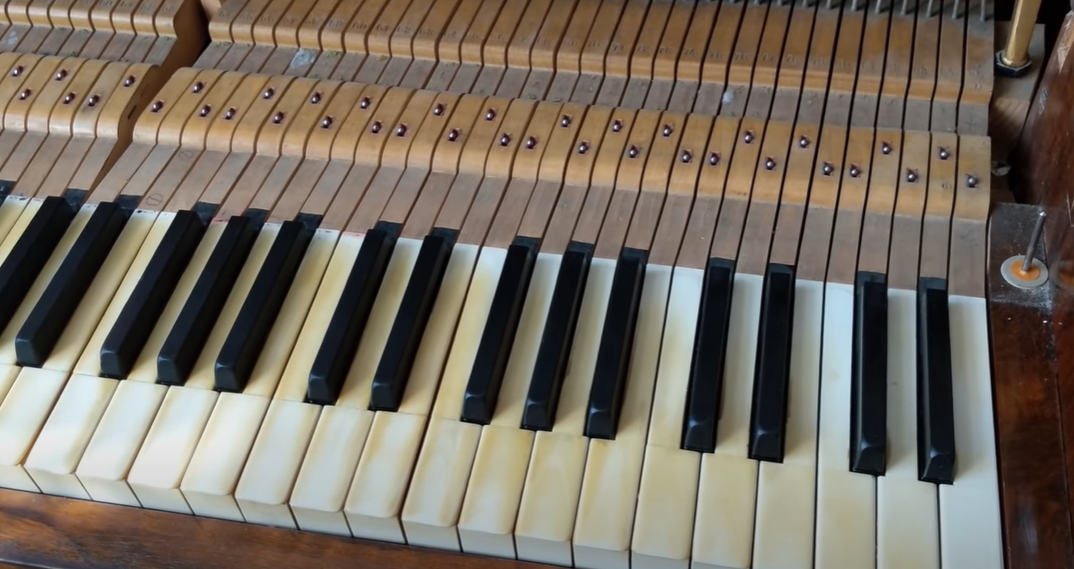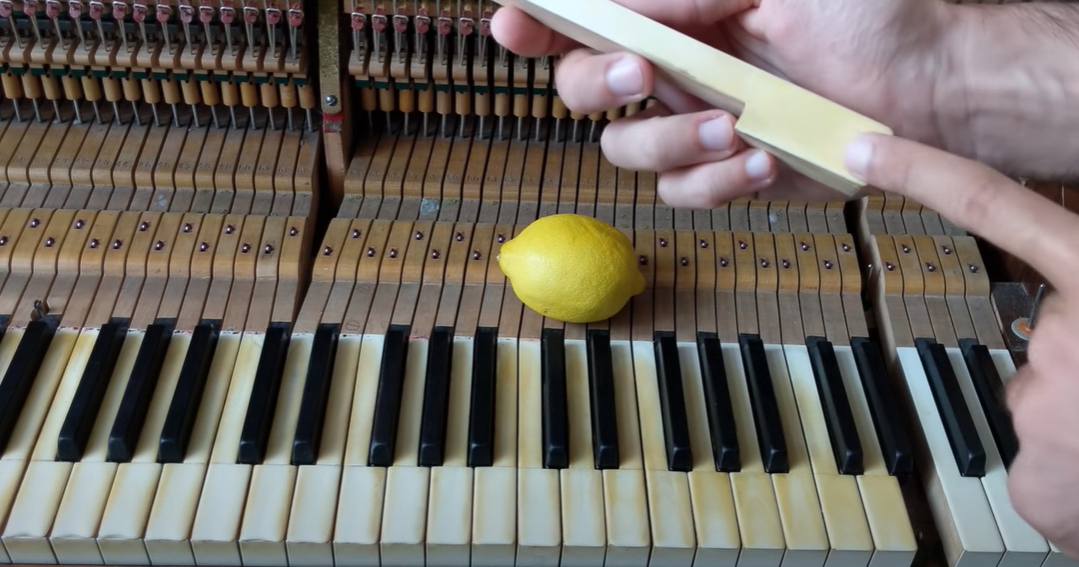Piano, an instrument of elegance and sophistication, has captured the hearts of many with its melodious tunes. One of its most iconic features is its black and white keys that, when pressed, emit a sound that can either be sweet and slow or fast and upbeat. But have you ever wondered what these keys are made from? This article will explore the fascinating evolution of piano keys, delving into their composition across time and the compelling reasons behind these material changes.
History of Piano Keys
The history of piano keys is a fascinating journey of material exploration and innovation.
Early Piano Keys
In the early years of piano manufacturing, during the 18th and early 19th centuries, piano keys were typically made from sugar pine or basswood for the whites and ebony for the blacks. The white keys were often topped with thin pieces of ivory, which gave them a smooth, luxurious feel and a subtle, glowing appearance. Ivory proved to be a popular material due to its dense, hard-wearing quality, which could withstand the intense and regular pounding of a pianist’s fingers. However, the use of ivory came with ethical implications and environmental concerns, leading to changes in the materials used for piano keys in later years.

Introduction of Ivory Keys
The advent of ivory keys marked a significant shift in piano manufacturing. Ivory’s distinct qualities, such as its exceptional durability and the pleasing sensation it offers under a pianist’s fingers, have long established it as a coveted material for piano keys. Ivory, being denser than wood, also offered a distinct advantage – it could better withstand the wear and tear of frequent use, maintaining a smooth finish for a longer period. The slightly porous nature of ivory absorbed perspiration from the players’ fingers, preventing them from slipping off the keys. This enhancement greatly enriched the playing experience, ultimately resulting in its widespread acclaim during the late 19th and early 20th centuries. However, this demand for ivory had a profound and devastating impact on elephant populations, leading to international bans on ivory trading. These bans, coupled with advancements in technology, would guide the evolution of piano key materials in the following years. [1]
How to Distinguish Ivory Keys?
Distinguishing between ivory and plastic piano keys can be challenging due to their visual similarities. However, several unique characteristics can aid in the identification process.
Color
The color of the key and its aging characteristics can be a significant clue in distinguishing ivory from other materials. Ivory piano keys are not perfectly white. They possess a slightly off-white or yellowish hue, which becomes more noticeable as they age. If you observe closely, you’ll also notice a fine grain pattern, akin to the growth rings of a tree, a characteristic unique to ivory. On the contrary, keys made from plastic or other synthetic materials are often bright white and lack the subtle grain pattern of ivory. However, merely using color as a determinant may not be foolproof, as some synthetic keys are designed to mimic the look and feel of ivory. Therefore, it’s essential to consider other distinguishing factors as well.

Use a Needle
One effective method to distinguish ivory keys from those made of synthetic materials involves a simple tool: a needle. Heat the needle until it’s hot, then lightly press it against a hidden part of the key, such as the back or side. If the key is made of ivory, the needle will not penetrate because ivory is a highly dense material. Conversely, if the key is made from plastic or another synthetic material, the hot needle will likely make a small indentation or even melt the material slightly. Do note, however, that this method is not recommended for valuable or antique pianos as it may potentially damage the keys, and should only be attempted under the supervision of a professional or an experienced individual. [2]
UV Method
Another reliable method for distinguishing ivory keys from synthetic ones is the UV method. When exposed to ultraviolet light, ivory keys exhibit a unique response due to the presence of organic compounds. Under UV light, authentic ivory keys will glow a bluish-white color, while synthetic keys will not produce this specific luminosity. To use this method, one would need a UV light source, such as a UV flashlight. After darkening the room, direct the UV light onto the keys and observe. True ivory keys will glow, confirming their authenticity. However, one should be cautious about interpreting UV responses, as other materials may also fluoresce under UV light. It is always advisable to consult with an expert when in doubt.
Keys Construction
In terms of construction, authentic ivory piano keys were typically made in three pieces – two thin layers of ivory were glued to a wooden key. The reason behind this three-piece construction was the size of elephant tusks; they were not broad enough to cover a piano key in a single piece. Therefore, a small ‘key front’ of ivory was added to complete the coverage. This key front created a tiny seam or line where it joined the main part of the key – another distinctive feature of ivory keys. Synthetic keys, on the other hand, are usually constructed in one piece without a seam. However, some high-quality synthetic keys may also mimic this three-piece construction to closely imitate the traditional ivory look. Again, while this criterion can help indicate if a key might be ivory or not, it isn’t definitive, and the advice of a professional is always recommended for accurate identification. [3]

Are Ivory Piano keys Banned?
Yes, the use of ivory in piano keys has been banned in many countries due to ethical and environmental reasons. The Convention on International Trade in Endangered Species of Wild Fauna and Flora (CITES) has placed a ban on the international commercial trade of African elephant ivory since 1990. This has influenced the decision of piano manufacturers worldwide to cease the use of ivory in the production of new pianos. In the United States, the ban on ivory import was tightened in 2016, making it extremely difficult to import or export pianos with ivory keys. The use of ivory has been replaced largely by plastics and other synthetic materials that aim to replicate the feel and aesthetic of traditional ivory keys. However, it’s important to note that pianos with ivory keys made before the bans are still legally owned and sold within countries, albeit with certain restrictions and requirements for documentation. [4]
Ivory vs Plastic Keys: What’s the Difference?
Ivory and plastic keys differ significantly in terms of feel, appearance, and impact on the environment. Ivory keys, as noted earlier, have a slightly porous nature which can absorb perspiration, providing a non-slip surface for the player. This can enhance the playing experience, particularly during long sessions or performances. However, ivory keys are prone to yellowing with age and can chip or crack over time, requiring professional restoration.
From an environmental perspective, the production of plastic keys has less impact on wildlife compared to the ivory trade, which led to the drastic decline in elephant populations. Thus, the shift to plastic keys has been a necessary and ethical change in piano manufacturing. Despite these differences, it’s important to note that the material of the keys does not affect the sound of the piano, as the sound production is determined by the strings and soundboard. [5]

FAQ
Are ivory piano keys illegal?
Ivory piano keys are not illegal per se, but the trade of new ivory is heavily regulated and generally prohibited. Existing ivory items, including piano keys, may be kept, sold, or transported under specific conditions. Most countries, including the U.S., have laws that allow for the possession and resale of ivory items, like piano keys, that were created before the restrictions were put in place. However, documentation proving the age of the ivory is often required. In some jurisdictions, there may be limitations on selling ivory items across state lines or internationally. It’s essential to check with local and federal laws or a legal expert if you have questions about the legality of ivory items in your possession.
When did they stop using ivory for piano keys?
The use of ivory in piano keys began to decline in the early 20th century as piano manufacturers started exploring alternative materials. By the mid-20th century, the use of ivory had significantly reduced due to rising costs and ethical concerns about elephant poaching. However, the definitive end to the use of new ivory in pianos came with the international ban on ivory trade imposed by CITES in 1990. Since then, piano manufacturers have universally adopted the use of synthetics and other non-ivory materials for the production of piano keys.
Are ivory piano keys worth anything?
Ivory piano keys can indeed have value, both in terms of monetary worth and historical significance. However, assessing their exact value can be complex due to several factors. Age, condition, and craftsmanship can enhance the keys’ value, but it’s also crucial to consider the legality and ethical implications of selling ivory. While it’s legal to sell antique ivory in many jurisdictions, it may require documentation proving its age. Additionally, the market for such items has shrunk due to the global push against ivory trade to protect elephant populations. As a result, the monetary value may not be as high as one might expect. If you own a piano with ivory keys and are interested in its worth, it’s advisable to consult a professional appraiser or a legal expert to understand the potential value and legal considerations.
Why are pianos missing some black keys?
The perception that pianos are “missing” some black keys is due to the arrangement of the keys in a specific musical pattern. Piano keys are designed to mirror the diatonic scale, which is the musical scale that consists of five whole steps and two half steps. In this scale, C-D-E-F-G-A-B-C, there are no sharps or flats between E and F, and B and C. These notes correspond to the white keys on the piano. The black keys represent the notes that fill in the gaps between these, known as sharps or flats (A# / Bb, C# / Db, D# / Eb, F# / Gb, G# / Ab). Therefore, the absence of black keys between E and F, and B and C is intentional and corresponds to the structure of the diatonic scale.
Is elephant ivory illegal?
Elephant ivory is indeed illegal in many places around the world due to the detrimental impact of ivory trading on elephant populations. International trade in new ivory has been prohibited since 1990 under the Convention on International Trade in Endangered Species of Wild Fauna and Flora (CITES). However, the legality of elephant ivory can vary by country and often depends on the age of the ivory in question. For instance, in the United States, the sale of ivory items is allowed if they were imported before the species was listed as endangered or if the item is over 100 years old, subject to certain restrictions and requirements for documentation. In contrast, countries like China and the UK have imposed near-total bans on the ivory trade. It’s recommended to check with local laws or legal experts if you have questions about the legality of ivory items in your possession.

How much is ivory worth?
The value of ivory can vary greatly depending on several factors. The demand for ivory in the market, the quality and condition of the ivory, the craftsmanship of the item, and its historical significance can all affect its worth. However, it’s critical to note that the sale and purchase of new ivory is heavily regulated and generally prohibited in many parts of the world due to ethical and conservation concerns. In the few cases where the sale is permitted, it’s usually limited to antique ivory items that meet specific criteria, with required documentation proving their age and provenance. While it’s difficult to provide an exact figure without professional appraisal, it’s understood that the value of ivory items has trended downwards due to the global restrictions and declining market demand. If you have ivory items and want to know their worth, it’s recommended to consult with a professional appraiser familiar with your local laws and the global ivory market.
Does real ivory turn yellow?
Yes, real ivory tends to turn yellow over time due to natural aging processes and exposure to certain environmental factors. The yellowing of ivory is often considered a sign of authenticity, as synthetic materials used to replicate ivory typically do not age in the same way. However, it’s important to note that the degree of yellowing can vary based on factors such as the ivory’s age, the conditions in which it’s been stored, and exposure to sunlight and air. Over time, ivory that is exposed to sunlight or high temperatures can develop a deeper, more pronounced yellow color. In contrast, ivory that is stored in dark, cool conditions may retain a lighter color for a longer period. Despite the yellowing, the underlying material remains durable and resistant to decay.
Do ivory piano keys crack?
Indeed, ivory piano keys can crack over time. Ivory is a natural material that reacts to environmental conditions. Changes in humidity and temperature can cause the ivory to expand and contract, leading to potential cracking or splitting. The age of the ivory, how it’s been cared for, and the conditions where the piano is stored can all contribute to this issue. Additionally, heavy use or strikes can also lead to cracks in the keys. This is one of the reasons modern pianos use synthetic materials which are more durable and resistant to environmental changes.
Does Steinway use ivory keys?
No, Steinway & Sons, one of the world’s leading piano manufacturers, does not use ivory keys in their modern piano production. The company ceased using ivory in the late 20th century due to a combination of ethical considerations and legal restrictions related to the protection of elephants. Instead, Steinway uses plastic keytops, which are durable, less prone to yellowing over time, and resistant to changes in humidity and temperature. The plastic keys also provide a more consistent feel and texture, a significant advantage for professional and amateur pianists alike.
Can you still buy ivory pianos?
While it is technically possible to buy a piano with ivory keys, it is worth noting that the sale of such items is governed by strict regulations due to the illegal trade of ivory and the related ethical and conservation issues. Most pianos that are for sale today are likely to have keys made of synthetic materials. However, you may encounter antique pianos with ivory keys in the resale market. It’s essential to verify the age of the piano and the legality of the sale before purchasing. Always consult with a legal expert or a professional appraiser who is familiar with the laws regarding the sale and possession of ivory items. Remember, purchasing new ivory items is illegal in many parts of the world, and most countries have stringent rules governing the sale of antique ivory pieces as well.
Useful Video: What are piano keys made of? | Cunningham Piano Co.
Conclusion
In conclusion, the rich history and aesthetic allure of ivory piano keys are undeniable. However, in our modern world, considerations of ethics, conservation, and legality have led to the widespread discontinuation of ivory use in piano manufacturing. Today, the piano keys are more often made of synthetic materials that mimic the look and feel of ivory, without the associated ethical and environmental issues. While antique ivory-keyed pianos still exist, they are subject to strict regulations and their sale requires careful verification of legality. The shift from ivory to modern alternatives represents a positive step towards sustainable and responsible practices in the world of music.
References:
- https://hellomusictheory.com/learn/what-are-piano-keys-made-of/
- https://enthu.com/blog/piano/what-are-piano-keys-made-of/
- https://orchestracentral.com/what-are-piano-keys-made-of/
- https://www.cmuse.org/what-are-piano-keys-made-of/
- https://yonamariemusic.com/yona/blog/199/what-are-piano-keys-made-out-of










Leave a Reply